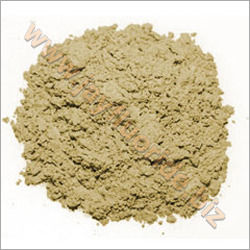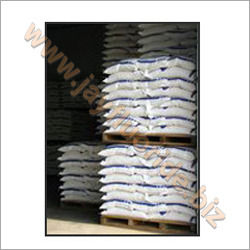Zinc Silicofluoride
Product Details:
- Melting Point Decomposes on heating
- Smell Odorless
- Molecular Weight 240.48 g/mol
- Density 2.09 Gram per cubic centimeter(g/cm3)
- Purity 98%
- Poisonous YES
- Product Type Inorganic Compound
- Click to View more
Zinc Silicofluoride Price And Quantity
- 50 Kilograms
- 120 INR/Kilograms
Zinc Silicofluoride Product Specifications
- YES
- Decomposes on heating
- Odorless
- 240.48 g/mol
- 2.09 Gram per cubic centimeter(g/cm3)
- 98%
- 24 months
- Store in a cool, dry place away from moisture and incompatible materials
- Inorganic Compound
- Zinc, silicofluoric acid
- White powder
- Soluble in water
- Industrial
- Powder
- Acidic
- ZnSiF6
- ZnSiF6
- Not available
- Astringent
- 28269000
- White crystalline solid, soluble in water, decomposes on heating
- Crystalline
- Electroplating, water treatment, textile industry
Zinc Silicofluoride Trade Information
- 100 Kilograms Per Day
- 1 Week
Product Description
Considering our rich expertise and skills in this industry, we are valued for manufacturing and supplying an extensive range of Zinc Silicofluoride. Our offered range of chemical compounds is processed using high grade quality components and sophisticated techniques. Our offered Zinc Silicofluoride is widely used in various industrial applications due to its features such as absolutely accurate composition, high purity and precise pH value. We offer this chemical range in distinguished compositions and strengths to meet the application requirements of our various industries.
Product Details:
| CAS NO | 16871-71-9 |
| Zinc | 30.85 % min |
| Fluorine | 53.85 % min |
| Free Acidity | 01.00 % |
| Sulfate | 00.50 % |
| Water Insoluble | 00.50 % |
| UN NO | 2855 |
| Formula | ZnSiF6.6H2O |
| Molecular Weight | 315.46 |
| Synonyms Name | Zinc Hexafluorosilicate / Zinc Silicofluoride |
| Appearance | White Crystalline Powder |
| Specific Gravity | 2.104 |
| Boiling Point | 100 Deg. C |
| Assay | 98.00 % min |
| Physical State | Crystals |
| Usage | Laboratory |
| Packaging Size | 50 / 25 Kgs |
| Packaging Type | HDPE Bag |
Optimal Applications Across Industries
Zinc Silicofluoride finds versatile use in electroplating, water treatment, and textile operations, owing to its reliable solubility and reactivity. In electroplating, it acts as a brightening agent, while in water treatment and textiles, its chemical properties help regulate process efficiency. Its high purity ensures consistent results for industrial-scale applications, establishing it as a dependable choice for manufacturers and suppliers.
Safe Storage and Handling
To maintain its efficacy and reduce hazards, Zinc Silicofluoride should be stored in a cool, dry location away from moisture and incompatible materials such as strong bases and oxidizing agents. Use protective gloves, clothing, and eye or face protection while handling. Following these safety measures helps prevent accidental exposure, skin burns, or eye damage, aligning with recommended precautionary statements.
FAQs of Zinc Silicofluoride:
Q: How should Zinc Silicofluoride be safely handled during use?
A: Wear appropriate protective gloves, protective clothing, and eye or face protection when using Zinc Silicofluoride to avoid severe skin burns or eye damage. If ingested, rinse the mouth and do not induce vomiting. Always handle it in well-ventilated areas, as it is harmful if swallowed and can cause serious injuries on contact.Q: What are the primary industrial applications of Zinc Silicofluoride?
A: Zinc Silicofluoride is extensively used in the electroplating industry as a brightener, as well as in water treatment and textile production for its chemical efficacy. Its solubility and reactivity make it suitable for various manufacturing processes requiring controlled chemical reactions.Q: When does Zinc Silicofluoride decompose, and what precautions are recommended?
A: Zinc Silicofluoride decomposes when heated; therefore, it should be kept away from high-temperature areas. Always store the product in a cool, dry place to maintain stability and avoid hazardous decomposition products.Q: Where should Zinc Silicofluoride be stored for optimal stability?
A: Store Zinc Silicofluoride in a clean, cool, and dry area away from moisture and sources of incompatible materials, like strong bases and oxidizers. Proper storage ensures a stable product throughout its shelf life of 24 months.Q: What is the manufacturing process for Zinc Silicofluoride?
A: Zinc Silicofluoride is manufactured using a solution process, in which zinc oxide reacts with hydrofluosilicic acid to produce a high-purity, white crystalline solid. This method ensures consistent quality and reliability for industrial use.Q: What are the key benefits of using Zinc Silicofluoride in process industries?
A: The main advantages include its uniform crystalline quality, high solubility, consistent 98% purity, and efficacy as a reliable reagent in industrial applications. These features maximize performance in processes such as electroplating, water treatment, and textile manufacturing.
Price:
- 50
- 100
- 200
- 250
- 500
- 1000+
Other Products in 'Silico Fluoride' category
 |
JAYFLUORIDE PRIVATE LIMITED
All Rights Reserved.(Terms of Use) Developed and Managed by Infocom Network Private Limited. |









